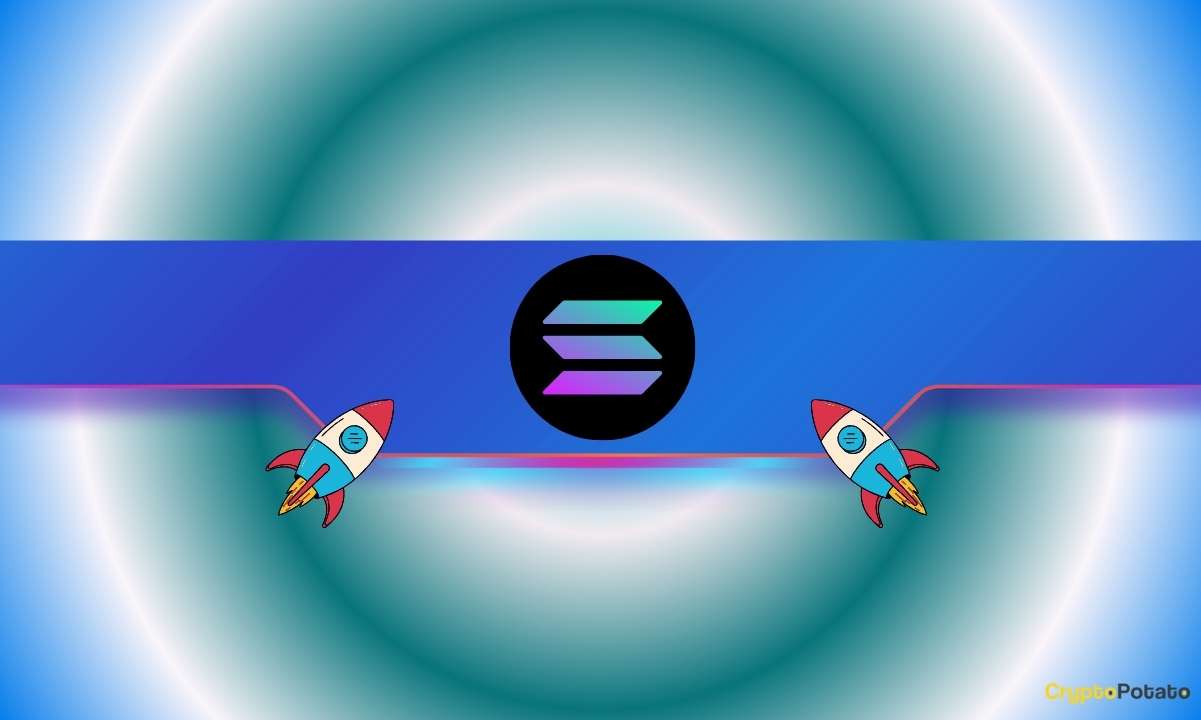Cryptocurrency
DVT 101: All You Need to Know on ETH Staking with Decentralized Validator Technology

By Adam Efrima
The crypto space is full of buzzwords and abbreviations, and today, I’ll be discussing one that’s not quite so widespread yet: Decentralized Validator Technology, or DVT. It promises to fix a major worry about how traditional validator setups operate on Ethereum by significantly decentralizing and securing the process.
Validators are the entities that build blocks in Proof-of-Stake (PoS) blockchains, similar to miners in Bitcoin (and other Proof-of-Work (PoW) protocols). Ever since Ethereum moved entirely to PoS in September 2022 with The Merge, the blockchain has been supported by a set of approximately 900,000 validators, which theoretically makes it the most decentralized PoS network currently live.
However, not all that glitter is gold in this space. Multiple issues have been raised regarding how PoS is currently implemented in Ethereum, all of which contribute to making it a bit less decentralized than it would seem. But first, we need to dive into the weeds of what a validator in Ethereum really is.
Ethereum Validators Aren’t Like the Rest
A big difference between Ethereum and other PoS networks is that the validator nodes need to have a stake of 32 ETH — no more, no less. This limit was chosen so that it’d offer a reasonable entry point for average Joes to stake while still not creating too many validators for no reason. Right now, 32 ETH is worth about $95,000, but back when staking was first introduced (first as a separate chain) in 2020, it was closer to $30,000.
If you hold more than 32 ETH though, you’ll need to split your stake between multiple “validators,” which explains the very large number of active validators today. In practice, there are likely 10,000-20,000 independent entities (including companies and indie stakers) who are contributing to Ethereum security.
On a technical level, validators are a special entity controlled by their own private keys, which are activated when a prospective staker bridges 32 ETH to the Beacon chain. This chain manages the consensus process, assigning a portion of validators to propose blocks while others “attest” that these blocks are correct. Behaving improperly, for example, by signing invalid blocks or by being offline, leads to stake slashing (though it’s usually quite soft) or penalties incurred on the ETH principal.
Many PoS systems (a.k.a Delegated-PoS or DPoS) enable stake delegation, where users can natively assign their coins to a particular validator, who they trust to do a good job validating the chain and earning staking yield (a centralizing force). On Ethereum, there are no native mechanisms to do this, meaning that people must either run their own validator (self-custody of keys) or trust a service to do so — that is, until DVT came along.
The Pressing Need to Decentralize Staking
The premise of Proof-of-Stake is that no single entity can control more than a certain percentage of the total stake that is currently engaged in validating a protocol. In that case, they can dictate what is the “majority” chain and start behaving incorrectly without penalties, jeopardizing the functioning of the network.
In Ethereum, currently, the vast majority of the staking power is held by Lido, a decentralized finance protocol that offers a convenient “wrapper” or liquid staking token (LST) of a user’s staked position called stETH. The benefit of this system is that you can just stake on the protocol or even buy the token and start staking to earn yield without doing anything else — the underlying system does everything for you.
Lido as a whole currently controls a bit more than 31% of the ETH staked, which is dangerously close to the 33% threshold needed to prevent Ethereum blocks from being finalized (if Lido wished to do so). This sounds worse than it really is: Lido is a decentralized protocol that spreads its stake over many independent node operators, so it can’t really coordinate easily to perform this attack.
Also, as a decentralized business whose entire model relies on being trusted by the Ethereum community, it has no incentive to do so. Finally, a 33% attack is not the end of the world for Ethereum, as it’d just result in blocks not being finalized — they’d still be correct, and the attacker wouldn’t be able to really exploit this issue.
But despite some caveats, some in the community are uneasy about Lido’s dominance, as ultimately, the node operators it chooses have custody over the staked ETH and control part of the validation process. Lido has, however, started implementing technologies to decentralize its node operations by integrating the Simple DVT module.
These advancements promote increased participation and collaboration, facilitating smaller operators to align with larger counterparts thereby fostering a more diverse and robust network. This inclusive approach sets the stage for a trustless future, allowing even at-home validators to integrate with Lido seamlessly.
Decentralized Validator Technology to the Rescue
If the issue is that validators are custodial and somewhat centralized, the logical solution is to turn this process into a decentralized and trustless mechanism. This is, in a nutshell, what DVT offers today.
DVT works by splitting an Ethereum validator’s private key into multiple shares via various cryptographic techniques. The shares are encrypted and distributed to node operators, who then simultaneously run the validator to contribute to Ethereum’s security. Because the actual validator key is never seen or controlled by the operators, the process becomes non-custodial, trustless, secure, and much more fault-tolerant.
DVT is only starting out, but it could be a significant part of Ethereum’s future roadmap. As the network pushes for more scalability, there are serious discussions of increasing the 32 ETH limit to make the total validator numbers more manageable. To counteract the increase in centralization, DVT is being proposed as one of the ways to enable fully decentralized staking pools for smaller users.
Author bio
Adam Efrima is the SSV Core team Co-founder, a decentralized validator infrastructure for ETH staking. He has been active in the crypto industry since 2013. Over eight years living in China working in the financial industry and fintech space, Adam has worked in CITIC Bank covering outbound investments for Chinese SOEs. He was also in charge of setting up eToro’s Shanghai operation. Since then, Adam has been deeply involved in Ethereum staking, co-founding the performing staking project Bloxstaking.
Binance Free $600 (CryptoPotato Exclusive): Use this link to register a new account and receive $600 exclusive welcome offer on Binance (full details).
LIMITED OFFER 2024 for CryptoPotato readers at Bybit: Use this link to register and open a $500 BTC-USDT position on Bybit Exchange for free!
Cryptocurrency
Standard Chartered Launches Institutional Spot BTC, ETH Trading

Standard Chartered has become the first internationally recognized financial heavyweight to launch direct spot trading for Bitcoin and Ethereum.
The offering positions the UK-based institution at the forefront of regulated digital asset integration within traditional finance.
Launch Mechanics and Client Access
According to reports, the new service will allow institutional clients, including asset managers, corporations, and large investors, to trade BTC and ETH directly using FX trading interfaces established by the bank.
Standard Chartered stressed that the trades are “deliverable,” meaning that customers will receive actual crypto assets upon settlement rather than mere exposure via derivatives. Additionally, users can choose their own custodian, including Standard Chartered’s in-house service.
At first, the offering will be available during Asian and European trading hours, with potential demand determining whether there will be 24/5 access in the future.
The bank also plans to introduce non-deliverable forwards (NDFs) trading for the two largest crypto assets by market cap. This will further expand risk management tools amid growing institutional appetite for digital assets.
Traditional banks are under increasing pressure to bridge the gap between legacy finance and crypto infrastructure, and Standard Chartered hopes to eliminate a major point of friction for institutional players who were previously forced to navigate a fragmented and often unregulated crypto sector.
A Broader Crypto Strategy
The UK spot trading launch is just one piece of Standard Chartered’s growing arsenal of digital asset solutions. At the beginning of the year, the bank established a dedicated Luxembourg entity to offer regulated crypto custody services within the EU.
Around the same time, it also dipped its feet into stablecoins and tokenization, partnering with Animoca Brands and HKT to develop a Hong Kong dollar-pegged stablecoin.
Compteitors like JPMorgan and Goldman Sachs have taken a more conservative approach to direct crypto spot trading, with Nate Geraci, co-founder of The ETF Institute, decrying this cautious stance.
Recently, while referencing Vanguard, another heavyweight player in the financial management space, he suggested that the refusal by such institutions to offer crypto products could alienate investors seeking exposure to such assets.
“What Vanguard is missing (*huge* miss IMO)…” Geraci posted. “Is there are tons of investors who love Vanguard’s low cost approach to stock & bond investing AND they want to own some btc & crypto.”
Meanwhile, Standard Chartered Group CEO Bill Winters has consistently stated that “digital assets are here to stay.” The company’s aggressive positioning grants it an early-mover advantage in a market where deep-pocketed investors are increasingly demanding secure, compliant crypto exposure amid a shifting regulatory environment and rising BTC adoption.
Binance Free $600 (CryptoPotato Exclusive): Use this link to register a new account and receive $600 exclusive welcome offer on Binance (full details).
LIMITED OFFER for CryptoPotato readers at Bybit: Use this link to register and open a $500 FREE position on any coin!
Cryptocurrency
Is Solana About to Explode Further? Analyst Reveals Next Targets

TL;DR
- Solana breaks above $166 Fibonacci level, with bulls eyeing targets at $171, $179, and $185.
- SOL trades above 9-day SMA, while MFI at 76 signals strong inflows but potential exhaustion.
- SEC ETF reviews add momentum to Solana’s ongoing upward price action.
SOL Chart Points to Bullish Target
Solana (SOL) has broken out of an ascending triangle. The price cleared the $166 mark, which is the 1.272 Fibonacci level. Traders now watch for the next levels at $171, $179, and $185. The structure shows rising lows and growing volume, which supports the move.
“This could be the cleanest breakout I’ve seen all month,” said analyst Ali on X.
If buyers stay in control, the $185 level may be next. But traders also watch for pullbacks, especially as prices move higher into resistance zones.
This could be the cleanest breakout I’ve seen all month! pic.twitter.com/FGWTYaOqDg
— Ali (@ali_charts) July 15, 2025
SMA and MFI Indicate Bullish Momentum
Solana trades above its 9-day simple moving average, which now sits at $158. This shows that buyers are still active. The slope of the line is pointing up, which supports the current direction.
At the same time, the Money Flow Index is at 76.16, which is close to the overbought line. This reading shows that funds have flowed in fast. But it also warns of possible profit-taking or price pauses near this level.
Network Use and ETF Talk Support Momentum
As CryptoPotato reported, the number of active users on Solana’s network has recently ticked up. This rise in activity often helps price moves stay strong. The added use shows interest in Solana is growing.
Meanwhile, the SEC is now reviewing spot ETF filings tied to Solana. These efforts are said to be moving quickly. If approved, they may open more ways for funds to buy SOL directly.
Binance Free $600 (CryptoPotato Exclusive): Use this link to register a new account and receive $600 exclusive welcome offer on Binance (full details).
LIMITED OFFER for CryptoPotato readers at Bybit: Use this link to register and open a $500 FREE position on any coin!
Cryptocurrency
Large Bitcoin Investors Realize $1.54 Billion in Profits but Rally Still Intact: CryptoQuant

Bitcoin’s climb above the coveted $120,000 level was short-lived, as the cryptocurrency pulled back to below $117,000 amidst renewed volatility. Over the past 24 hours, it declined by over 4%.
On-chain signals reveal increased miner activity, which suggests short-term selling pressure.
Miners Cashing Out?
As the price approached new highs, the Miners’ Position Index (MPI) – which gauges the ratio of miner outflows to their one-year moving average – spiked to levels last seen during major sell-off periods. This means that some of them may have begun taking profits into strength, a pattern often seen when the MPI reading rises above 2, hinting at larger-than-usual Bitcoin outflows from miners to exchanges.
While such moves can introduce short-term selling pressure, CryptoQuant explained that historical patterns indicate they do not always derail broader bullish trends when demand from other investor cohorts remains strong.
At the same time, Binance, the world’s largest cryptocurrency exchange, recorded net inflows of nearly 6,000 BTC between July 12 and July 14. This activity reversed a period of predominantly neutral or negative netflows. The sudden influx alongside the recent price rally points to potential arbitrage activity, derivative hedging, or preparations for large-scale transactions rather than outright panic selling.
Considering all these factors together, the uptick in miner activity and increased exchange deposits mean that while some market participants are realizing gains, others may be positioning for continued price action.
Amid these miner outflows and Binance inflows, Glassnode recorded one of the year’s largest profit-taking days.
Bitcoin Logs One of Its Largest Profit-Taking Days
According to the blockchain intelligence platform’s findings, Bitcoin investors collectively realized $3.5 billion in profits over the past 24 hours.
This is one of the largest profit-taking days for BTC this year. Interestingly, long-term holders accounted for approximately $1.96 billion, or 56% of the realized gains, while short-term holders captured around $1.54 billion and accounted for the rest.
The significant wave of profit realization, led predominantly by long-term holders, demonstrated how seasoned investors are seizing the opportunity to lock in gains as Bitcoin hit a fresh peak while still allowing room for fresh capital to enter.
Binance Free $600 (CryptoPotato Exclusive): Use this link to register a new account and receive $600 exclusive welcome offer on Binance (full details).
LIMITED OFFER for CryptoPotato readers at Bybit: Use this link to register and open a $500 FREE position on any coin!

 Forex3 years ago
Forex3 years agoForex Today: the dollar is gaining strength amid gloomy sentiment at the start of the Fed’s week

 Forex3 years ago
Forex3 years agoUnbiased review of Pocket Option broker

 Forex3 years ago
Forex3 years agoDollar to pound sterling exchange rate today: Pound plummeted to its lowest since 1985

 Forex3 years ago
Forex3 years agoHow is the Australian dollar doing today?

 Cryptocurrency3 years ago
Cryptocurrency3 years agoWhat happened in the crypto market – current events today

 World3 years ago
World3 years agoWhy are modern video games an art form?

 Commodities3 years ago
Commodities3 years agoCopper continues to fall in price on expectations of lower demand in China

 Economy3 years ago
Economy3 years agoCrude oil tankers double in price due to EU anti-Russian sanctions























